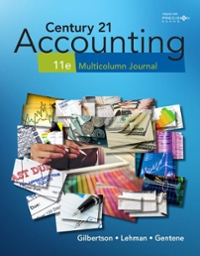Question
Extra Credit Assignment - Case Study: Forecasting Financial Statements & Ratios Due Friday, April 24, 2020 90 Points Case Overview Ben Francis has decided to
Extra Credit Assignment - Case Study: Forecasting Financial Statements & Ratios
Due Friday, April 24, 2020
90 Points
Case Overview
Ben Francis has decided to start an Internet business selling quality workout gear in the upcoming year. He believes that his products are innovative and tending well and is seeking a business loan. Therefore, Ben is in the process of putting together a business plan. As part of the business plan process, Ben must include forecasted financial statements for the first 5 years. The forecasted financial statements to be included are: Income Statement, Balance Sheet, and Statement of Cash Flows.
Forecasting Assumptions
First year sales are projected to be $100,000 and grow/decline at the following rates:
Year 1 - Year 2
+ 2%
Year 2 - Year 3
-4%
Year 3 - Year 4
+10%
Year 4 - Year 5
+ 5%
Cost of sales are projected based on percentage of revenue as follows:
Year 1 - Year 2
45%
Year 2 - Year 3
56%
Year 3 - Year 4
42%
Year 4 - Year 5
42%
Advertising expenses are projected to be 3% of each year's projected revenue.
Ben will outsource the creation and maintenance of his proprietary website with an outsourcing contract starting at $5,000 in year one and a 3% escalation clause each year.
A part-time assistant will be hired stating on day one/year one for $20,000 per year.
Office rent is estimated to be a flat rate of $1,500 per month under a five-year lease agreement with no escalation clause for the duration of the lease.
Utilities for the rented office space are estimated to be $250 per month.
The office space be to rented is unfurnished. The company will purchase $8,000 worth of furniture and fixtures at the beginning of Year 1. The furniture and fixtures will have a useful life of 15 years. The company will also purchase some computers and other office equipment for $10,000 also at the beginning of Year 1. The office equipment will have a useful life of 5 years. Both the furniture and fixtures as well as the equipment will be depreciated on a straight-line basis (Assume zero salvage value for calculations).
A 5-year bank loan will be negotiated for $75,000. The estimated interest on the loan is 2% (assume simple interest). It will be paid back in $15,000 installments starting in Year 2. Interest is due at the end of each year and paid in January of the following year.
The tax rate is 25%. Taxes for the year just ended are payed in the first quarter of the following year.
Ben will invest $10,000 of her own money and from family and friends to start the business. This $10,000 investment of capital is also the beginning bank balance of Year 1.
Accounts Receivable at year end is equal to 30 days of sales.
Accounts Payable at year end is equal to 45 days of purchases (cost of sales)
At the end of Year 2, the company will purchase an insurance policy to help cover the business. The policy has a term of 3 years and coverage starts at the beginning of Year 3. The policy costs $5,000.
Additional Instructions
You must use the given Excel template attached to this assignment.
The three financial statements are interconnected. Where applicable, reference the appropriate cells from other tabs. Also, use formulas within the cells where applicable. (Instructors may deduct points for not using cell references and formulas.)
Some cells have additional notes (cells marked with a red triangle in the upper right-hand corner; hover over the triangle to see the note).
The shaded areas are for data input. (NOTE: You will need to enter formulas to calculate subtotals on the 'Cash Flow Statement' tab for each major category)
On each tab there is an area to keep track of the various assumptions. The column labeled 'Assumptions' is to make note of any numbers, percentages, etc. relevant to that line item. The column labeled 'Assumption Explanations' is to help keep track of the 'Forecasting Assumptions' from above. (You can copy and paste the assumptions onto the relevant line item). On the 'Ratios' tab there is an area to layout the formulas and show your work.
There is a grading area on each tab that is being calculated as you input information. Please use this area to see where any mistakes are being made.
Income Statement
Revenue
Cost of Sales
Gross Margin
Operating Expenses
Advertising
Website/Content Creation
Wages
Office Rent
Utilities
Insurance Expense
Depreciation
Operating Income
Interest Expense
Income before taxes
Income taxes
Net Income/(Loss)
Balance Sheet
Assets
Cash
Accounts Receivable
Prepaid Insurance
Current Assets
Furniture & Fixtures (net)
Equipment (net)
Total Assets
Liabilities
Accounts payable
Interest payable
Taxes payable/(receivable )
Current Liabilities
Bank loan
Total Liabilities
Stockholder's Equity
Capital
Retained Earnings
Total Stockholder's Equity
Total Liabilities & Stockholder's Equity
Cashflow Statement
Net Income
Add back depreciation
Changes in working capital
Accounts Receivable
Prepaid Expenses
Accounts Payable
Interest payable
Taxes Payable
Cash flows from operating activities
Amount paid for equipment
Amount paid for furniture & fixtures
Cash flow from investing activities
Proceeds from bank loan
Proceeds from issuing capital
Repayment of bank loan
Cash flow from financing activities
Net increase (decrease) in cash
Add: Beginning cash balance
Ending Cash balance
Must show all work!
Step by Step Solution
There are 3 Steps involved in it
Step: 1

Get Instant Access to Expert-Tailored Solutions
See step-by-step solutions with expert insights and AI powered tools for academic success
Step: 2

Step: 3

Ace Your Homework with AI
Get the answers you need in no time with our AI-driven, step-by-step assistance
Get Started


